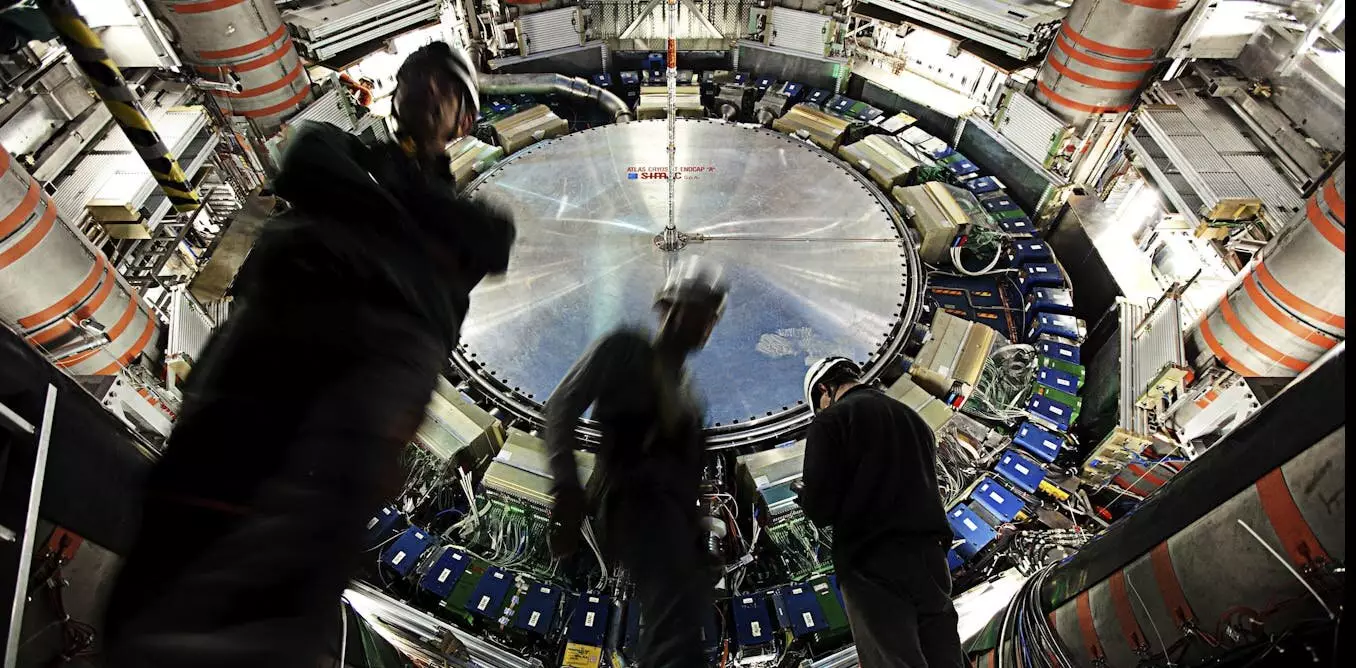Quantum entanglement is one of the most intriguing concepts in the realm of physics, often described as a phenomenon where particles remain interconnected, regardless of the distance separating them. This intricate relationship defies classical interpretations of space and time, suggesting that information about one particle instantaneously informs about the state of another, even if they are light-years apart. The classical analogy of separating two balls, connected by a string and situated kilometers apart, illustrates this idea, yet entangled particles eschew any tangible connection, existing in a unique state that challenges our understanding of reality itself.
Discovered in the 1980s, entanglement has primarily been showcased in systems involving photons—tiny packets of light. Recent breakthroughs, however, in experiments conducted at the Large Hadron Collider (LHC) in Geneva, have brought this phenomenon to the forefront in the context of top quarks. These are the heaviest particles identified in particle physics and have resurfaced as a point of exploration for scientists eager to delve deeper into the complexities of quantum mechanics.
The ATLAS collaboration at the LHC has made pivotal strides in observing entangled pairs of top quarks, marking a significant advancement in our comprehension of high-energy physics. In these experiments, researchers have successfully demonstrated that top quarks—particles with a mass exceeding that of a tungsten atom—can exhibit entangled behavior under conditions of immense energy densities. This discovery not only broadens our horizon concerning entanglement but also serves as a crucial step toward understanding the fundamental forces and particles that make up our universe.
The top quark, the last of the six known quark flavors, poses profound questions regarding its mass and the forces influencing it. Previous explorations have categorized quarks into ‘up’ and ‘down’ varieties making up protons and neutrons, with other heavy varieties including the bottom quark. But the top quark’s staggering mass, which is roughly 184 times that of a proton, remains a enigma. The peculiarities of its mass could suggest the existence of undiscovered fundamental forces or connections to new physics paradigms, warranting further research.
Applications and Implications of Entangled Quarks
Engagement with the physics of the top quark holds both immediate and long-term implications. While it derived its initial fame from its role in understanding particle interactions and decay processes, the latest findings about its entangled state lend new significance. Though utilizing top quarks for practical technologies remains a distant goal—due to their ephemeral existence and the impracticality of transporting something like the LHC—this exploration provides a fresh lens through which physicists can delve into the quantum realm.
Entanglement, despite being a ubiquitous property in theory, remains an area of intense scrutiny due to its delicate nature. It has primarily been studied in controlled environments characterized by ultra-cold temperatures to mitigate any external disturbances that could disrupt the fragile quantum states. The successful demonstration of entangled pairs of heavy quarks like those generated in the LHC expands the landscape of operational environments that can be explored. This access to high-energy, non-standard conditions represents an important milestone for researchers.
The concept of quantum entanglement often blurs the lines between scientific understanding and imaginative storytelling. Popular culture has adopted themes of entanglement in various forms, most recently epitomized in adaptations such as the Chinese science fiction series “3 Body Problem.” Themes of interstellar communication and manipulation highlight issues intertwined with quantum physics, yet remain rooted in the creative liberties of fiction.
While these portrayals enchant our imaginations, they also misrepresent the foundational tenet of quantum physics: information cannot travel faster than light, irrespective of entanglement. The ability to influence distant particles appears theoretically appealing, but it remains within the domains of speculation rather than operational scientific practice. Thus, while discovering the entangled behavior of top quarks is a remarkable achievement, it does not transgress the known boundaries of communication and information transfer established by relativity.
The exploration of top quark entanglement serves as a testament to the inexhaustible curiosity that drives scientific inquiry. With each discovery, new questions arise, beckoning physicists to venture deeper into the quagmire of quantum mechanics. We stand at the precipice of a new era in particle physics, one that has the potential to redefine existing theories and illuminate the path toward answers.
As research progresses around entangled quarks, much remains to unravel. The complexities of the universe, as unveiled by quantum physics, not only challenge our conceptual frameworks but also inspire a generation to question, innovate, and explore. The dance of entangled particles, rich with implications for physics and technology, provides a shimmering glimpse into the wonders and unknowns that lie ahead.

